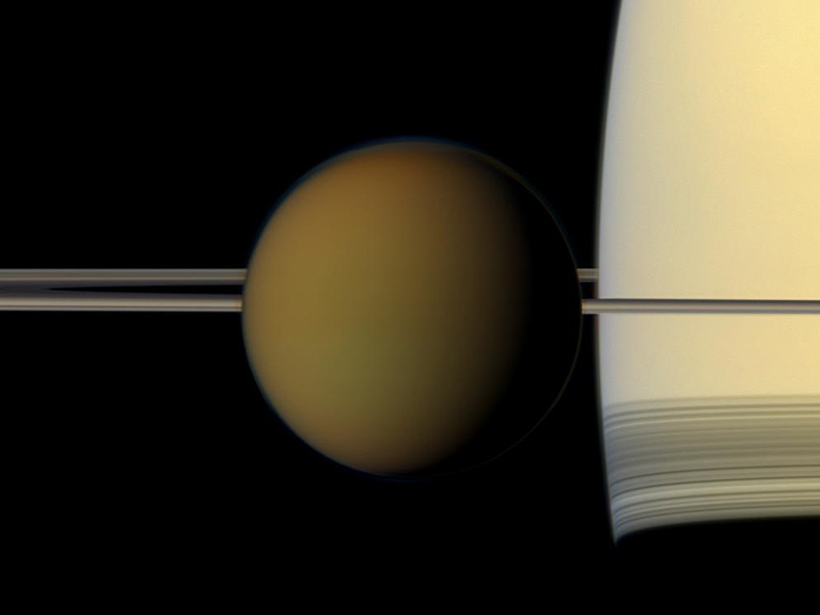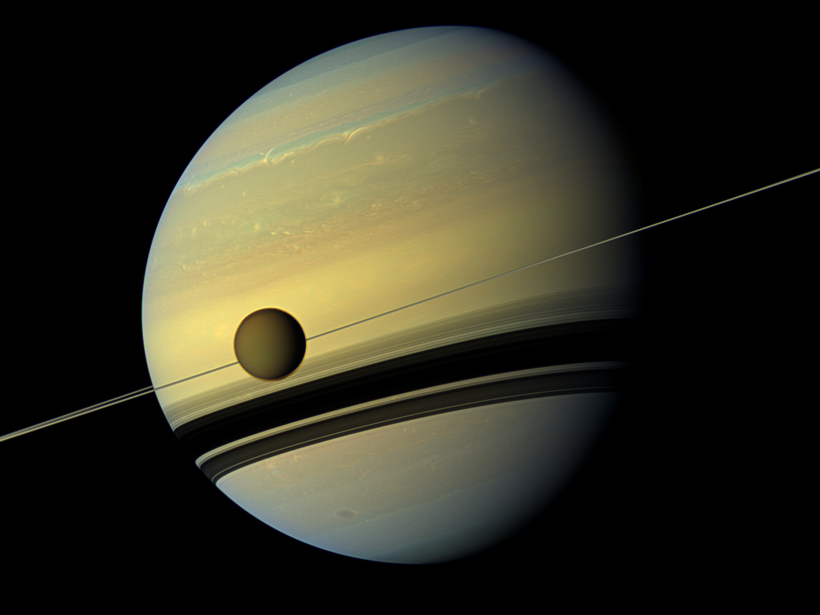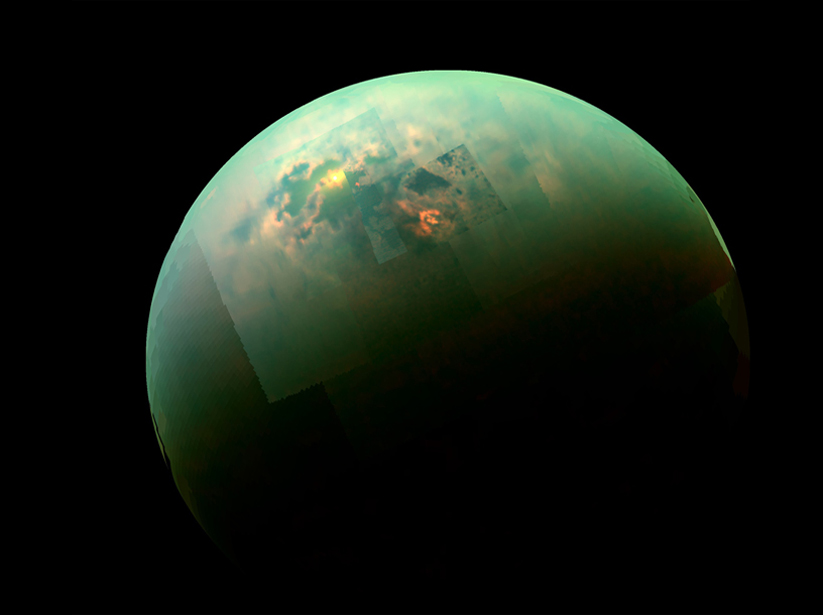Cassini will fly close to Saturn's largest moon one last time. Here's a look back at what the spacecraft has revealed and ahead to scientists' final close glimpses of the moon.
Titan
Posted inNews
The Curious Case of Titan’s Missing Clouds
Two instruments, one region on Titan: One instrument saw clouds, the other didn't—what's going on?
Posted inResearch Spotlights
How Saturn Alters the Ionosphere of Titan
New research shows that Saturn's powerful magnetic field changes the atmospheric chemistry of its largest moon, Titan.
Posted inResearch Spotlights
When the Sun Goes Quiet, Titan Gets Gassy
Observations from NASA's Cassini probe show that the level of methane in Titan's atmosphere depends on the Sun's 11-year cycle of magnetic activity.
Posted inResearch Spotlights
What’s Driving Titan’s Atmosphere?
A new analysis of Cassini data reveals a major source of heavy hydrocarbons on Saturn’s moon Titan.





